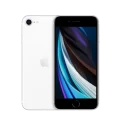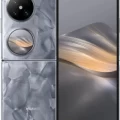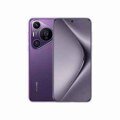- PRODUCTS
- Apple iPhone
- iPhone Price in Kenya
iPhone Price in Kenya
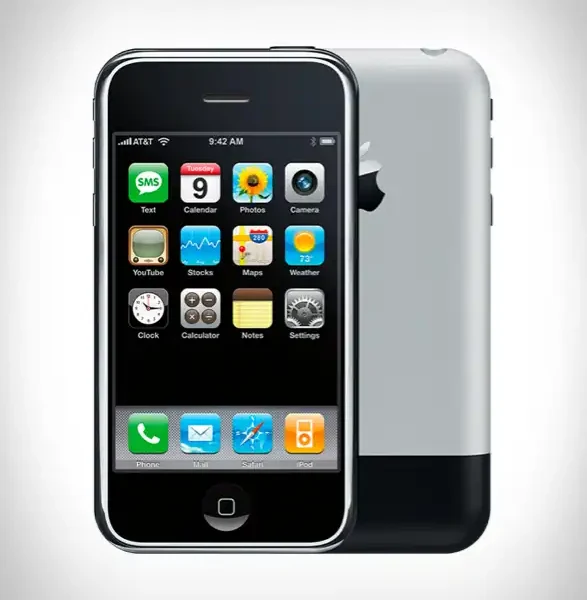

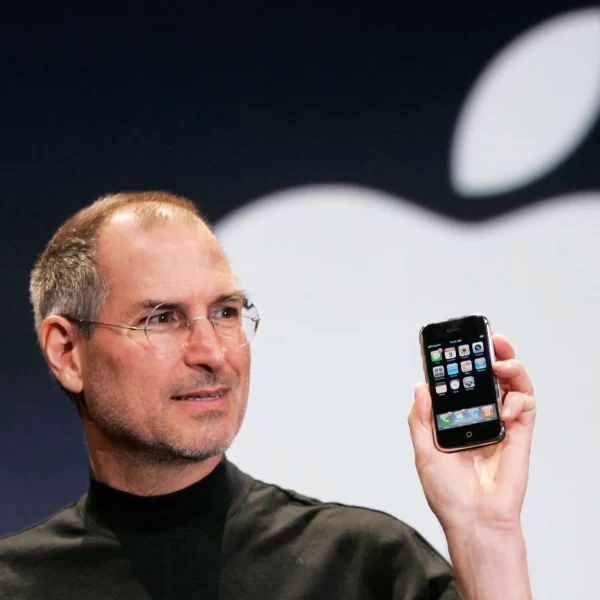
iPhone, also known as the iPhone 1, stands as a testament to the visionary thinking and groundbreaking design that has defined Apple’s journey in the mobile industry.
In the Kenyan market, where the smartphone revolution has gained significant momentum, the iPhone 1 holds a special place in the hearts and minds of tech enthusiasts and early adopters. This retrospective review will explore the key features, impact, and legacy of the iPhone 1, providing Kenyan consumers with a comprehensive understanding of this pioneering device and its influence on the evolution of the smartphone.
Design and Display
The iPhone 1, unveiled in 2007, was a true game-changer in the realm of smartphone design. Departing from the traditional button-centric interfaces that dominated the market at the time, the iPhone 1 introduced a sleek and minimalist aesthetic that centered around a large, high-resolution touchscreen display.
The device’s iconic design featured a seamless glass and aluminum construction, with a 3.5-inch diagonal display that boasted a resolution of 320 x 480 pixels. This display, which was considered a marvel of its time, offered a crisp and vibrant visual experience, setting a new standard for mobile computing.
One of the standout design elements of the iPhone 1 was its lack of physical buttons, save for the home button and volume controls. This bold decision paved the way for a more intuitive and gesture-based user interface, which would become a hallmark of the iOS operating system.
In terms of dimensions, the iPhone 1 measured 115 x 61 x 11.6 mm and weighed a mere 135 grams, making it a compact and lightweight device that was easy to hold and operate with a single hand – a feature that was highly valued by Kenyan consumers.
Hardware and Performance
Under the hood, the iPhone 1 was powered by a 412 MHz ARM 11 processor, which, while not the most powerful by today’s standards, was a significant leap forward in mobile computing power at the time. This processor, coupled with 128MB of RAM, provided a smooth and responsive user experience for Kenyan consumers, allowing them to navigate the device’s intuitive interface and perform basic tasks with ease.
One of the standout hardware features of the iPhone 1 was its storage capacity, which was available in either 4GB or 8GB variants. While these storage options may seem modest by today’s standards, they were considered generous for a smartphone in 2007, catering to the needs of Kenyan users who were eager to store their music, photos, and other digital content on their mobile devices.
The iPhone 1 also featured a 2-megapixel rear-facing camera, which, while not the most advanced by today’s standards, was a significant improvement over the basic camera capabilities found in many feature phones of the era. Kenyan users could capture decent quality images and share them with friends and family, marking a notable advancement in mobile photography.
Software and User Experience
The iPhone 1 was the first Apple device to run the iOS operating system, which was a revolutionary departure from the traditional mobile operating systems of the time. The iOS interface, with its intuitive touch-based navigation and seamless integration of core applications, provided Kenyan users with a user experience that was both intuitive and visually appealing.
One of the standout features of the iPhone 1’s software was the introduction of the App Store, which allowed users to download and install a wide range of third-party applications, from productivity tools to games and entertainment. This ecosystem of apps, which continues to evolve and expand to this day, was a game-changer for Kenyan consumers, providing them with access to a vast array of digital content and services.
The iPhone 1’s software also included features such as the Safari web browser, which offered a desktop-like browsing experience on a mobile device, and the iPod music player, which allowed Kenyan users to enjoy their favorite tunes on the go.
Impact and Legacy
The launch of the iPhone 1 in 2007 had a profound impact on the global smartphone market, and its influence was felt even in the Kenyan market. The device’s innovative design, powerful hardware, and intuitive software set a new standard for mobile computing, and it quickly became a status symbol and a must-have item for tech-savvy Kenyan consumers.
The iPhone 1’s success paved the way for the rapid adoption of smartphones in Kenya, as it demonstrated the potential of these devices to transform the way people communicate, access information, and entertain themselves. The device’s popularity also inspired other manufacturers to step up their game, leading to increased competition and innovation in the Kenyan smartphone market.
Beyond its immediate impact, the iPhone 1’s legacy continues to be felt in the evolution of the smartphone industry. The device’s influence can be seen in the design, features, and user experiences of countless smartphones that have followed in its footsteps. The iPhone 1’s pioneering role in the development of the touchscreen interface, the App Store ecosystem, and the overall smartphone user experience has left an indelible mark on the industry.
Pricing and Availability in Kenya
When the iPhone 1 was first introduced in the Kenyan market, it was priced at a premium, reflecting the device’s cutting-edge technology and innovative design. The 4GB variant of the iPhone 1 was initially sold for around KES 80,000 to KES 100,000, while the 8GB model was priced slightly higher, at around KES 100,000 to KES 120,000.
The high price point of the iPhone 1 in Kenya was a significant barrier for many consumers, as it placed the device out of reach for a large segment of the population. However, the device’s popularity and the prestige associated with owning an iPhone meant that it quickly became a status symbol among the Kenyan elite and tech-savvy early adopters.
Over time, as newer iPhone models were introduced and the original iPhone 1 became obsolete, the device’s price in the Kenyan market dropped significantly. Today, it is possible to find used or refurbished iPhone 1 units for a fraction of their original cost, making them more accessible to a wider range of Kenyan consumers.
Pros and Cons
Pros:
- Pioneering design with a large, high-resolution touchscreen display
- Intuitive and user-friendly iOS operating system
- Introduction of the App Store, providing access to a vast ecosystem of apps
- Decent camera capabilities for the time
- Compact and lightweight form factor
- Iconic status and brand recognition
- Influenced the evolution of the smartphone industry
Cons:
- Limited processing power and RAM compared to modern smartphones
- Modest storage options (4GB or 8GB)
- Basic camera features by today’s standards
- High initial price point, making it inaccessible for many Kenyan consumers
- Limited software updates and support over time
- Lack of features like 3G/4G connectivity, GPS, and advanced sensors
Conclusion
The iPhone 1 stands as a testament to the transformative power of innovation and design in the smartphone industry. Its introduction in 2007 marked a pivotal moment in the evolution of mobile computing, and its impact was felt even in the Kenyan market.
While the iPhone 1 may not be the most technologically advanced device by today’s standards, its legacy continues to shape the smartphone landscape. The device’s pioneering design, intuitive user experience, and the introduction of the App Store ecosystem have all left an indelible mark on the industry, inspiring countless iterations and advancements in the years that followed.
For Kenyan consumers, the iPhone 1 represents a significant milestone in the history of smartphones, a device that paved the way for the widespread adoption and integration of these devices into everyday life. While the device may no longer be a practical choice for modern-day usage, its historical significance and the influence it has had on the industry cannot be overstated.
As the smartphone industry continues to evolve, the iPhone 1 will forever be remembered as a groundbreaking device that changed the way we interact with and experience mobile technology. Its legacy serves as a testament to the power of innovation and the transformative potential of design in shaping the future of communication and connectivity.
Specs
NETWORK
| Technology | GSM |
LAUNCH
| Release Date | 2007, January. Released 2007, June |
| Status | Discontinued |
BODY
| Dimensions | 115 x 61 x 11.6 mm (4.53 x 2.40 x 0.46 in) |
| Weight | 135 g (4.76 oz) |
| SIM | Mini-SIM |
DISPLAY
| Type | TFT |
| Size | 3.5 inches, 36.5 cm2 (~52.0% screen-to-body ratio) |
| Resolution | 320 x 480 pixels, 3:2 ratio (~165 ppi density) |
| Protection | Corning Gorilla Glass, oleophobic coating |
PLATFORM
| OS | iOS, upgradable to iOS 3.1.3 |
| CPU | 412 MHz ARM 11 |
| GPU | PowerVR MBX |
MEMORY
| Card slot | No |
| Internal | 4/8/16GB |
MAIN CAMERA
| Back | 2 MP |
| Video | No |
SELFIE CAMERA
| Front | No |
SOUND
| Loudspeaker | Yes |
| 3.5mm jack | Yes |
COMMS
| WLAN | Wi-Fi 802.11b/g |
| Bluetooth | 2.0 (headset support only) |
| Positioning | No |
| Radio | No |
| USB | 2.0 |
FEATURES
| Sensors | Accelerometer, proximity |
BATTERY
| Type | Li-Ion 1400 mAh, non-removable |
MISC
| Models | A1203, iPhone1,1 |
| Colors | Black |
Reviews
Disclaimer Note
Disclaimer: We don't guarantee that the information on our page is 100% correct.
